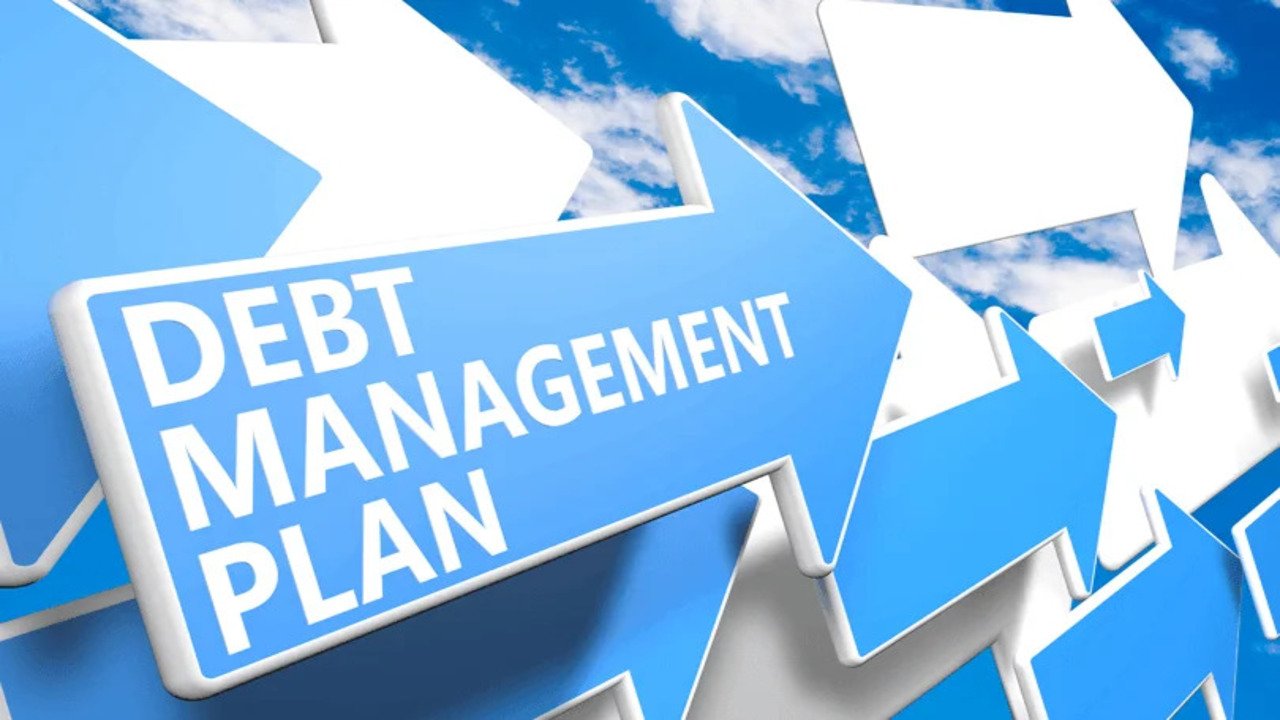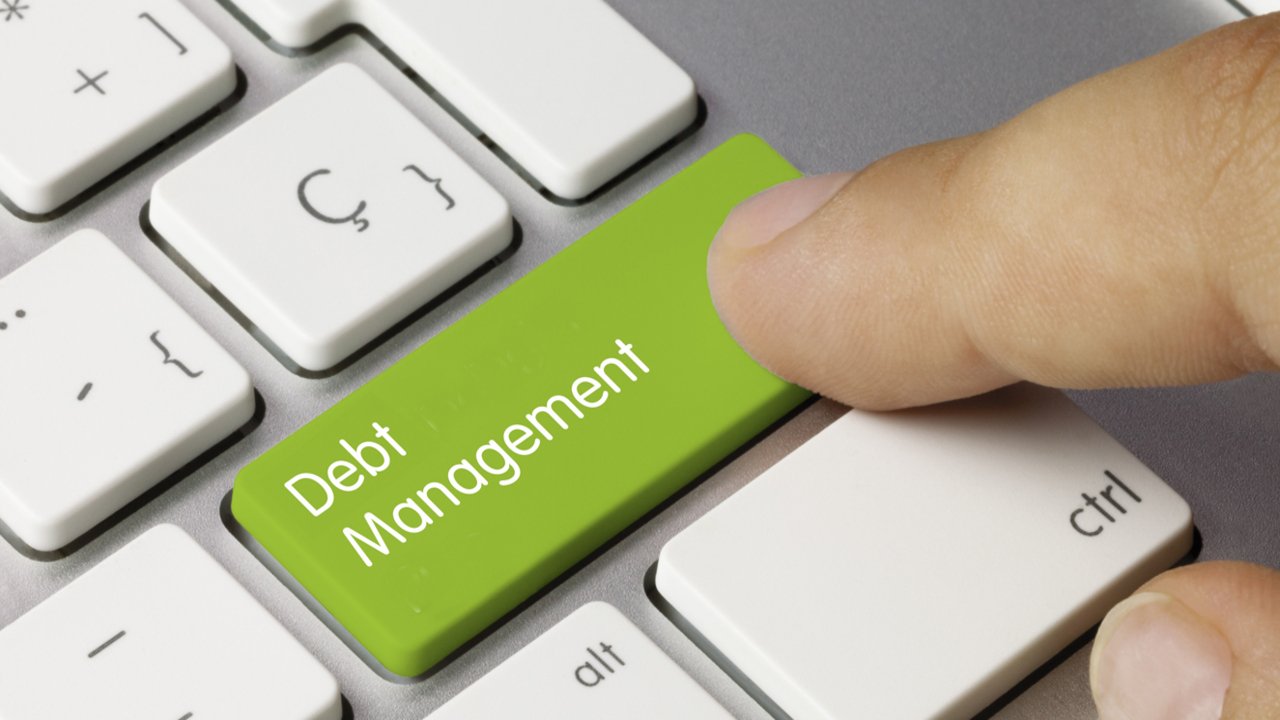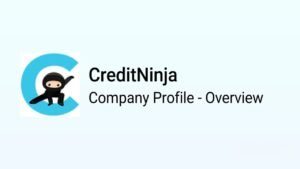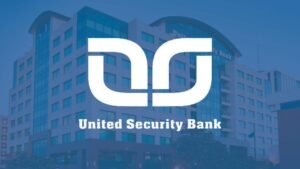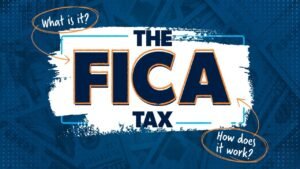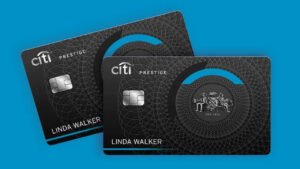Debt Management Plan Reduce Debt & Regain Control in 2025.
Dealing with debt can feel like a huge weight. You’re not alone in this, lots of people struggle with it. It’s easy to get overwhelmed by bills, interest rates, and collection calls. But, there’s a way to get a handle on things and start moving towards a less stressful financial life. This guide is all about understanding how a debt management plan can help you get back on track. We’ll break down what it is, how it works, and why it might be the right move for you.
Thank you for reading this post, don't forget to subscribe!Key Takeaways
- A debt management plan helps organize your debts, often by consolidating payments and negotiating with creditors for better terms.
- Understanding your total debt, categorizing it, and reviewing your budget are the first steps to creating a repayment strategy.
- DMPs can lead to lower interest rates and potential fee waivers, making repayment more manageable.
- While a DMP can positively impact your credit over time through consistent payments, there might be an initial dip.
- Seeking help from certified credit counselors or nonprofit agencies can provide structure and support for your debt management plan.
Understanding Your Debt Landscape
Before you can even think about managing your debt, you need to really get a handle on what you owe. It’s like trying to fix a leaky pipe without knowing where the water is coming from. Taking stock of your financial situation is the first, and maybe most important, step. It might feel a little uncomfortable at first, looking at all those numbers, but it’s necessary. You’re not alone in this; many people are dealing with debt, and understanding it is the key to moving forward.
Assessing Your Total Debt Load
First things first, let’s figure out the total amount of money you owe. Grab a notebook, open a spreadsheet, whatever works for you. List out every single debt you have. This includes credit cards, personal loans, car loans, student loans, medical bills, and even money you might owe to friends or family. For each debt, write down the total amount you still owe, the interest rate (this is a big one!), and the minimum monthly payment. Don’t forget to note the due date for each payment.
Here’s a simple way to organize it:
| Debt Type | Current Balance | Interest Rate (%) | Minimum Payment | Due Date |
|---|---|---|---|---|
| Credit Card 1 | $5,000 | 22.5 | $150 | 15th |
| Car Loan | $12,000 | 6.0 | $300 | 28th |
| Student Loan | $25,000 | 4.5 | $250 | 10th |
| Medical Bill | $1,500 | 0.0 (interest-free) | $50 | 5th |
Categorizing Your Debts by Type
Now that you have your list, let’s sort these debts. This helps you see where your money is going and which debts might be costing you the most. Generally, debts fall into a few categories:
- High-Interest Debt: Think credit cards, payday loans, or personal loans with really high Annual Percentage Rates (APRs). These can grow quickly.
- Low-Interest Debt: Things like most student loans or mortgages often have lower interest rates.
- Secured Debt: These are debts backed by an asset, like your car loan (the car is collateral) or mortgage (the house is collateral). If you don’t pay, they can take the asset.
- Unsecured Debt: These aren’t tied to any specific asset, like most credit cards or personal loans. While they don’t risk losing an asset, they can still lead to serious collection actions.
Evaluating Your Monthly Budget
With your debts laid out, it’s time to look at your income and expenses. How much money comes in each month, and where does it all go? Be honest here. Track your spending for a month if you need to. Look for areas where you can cut back, even small things add up. The goal is to see how much money is actually available to put towards your debts beyond just the minimum payments. This might mean cutting back on dining out, subscriptions you don’t use, or finding cheaper alternatives for everyday items.
Understanding your budget isn’t just about cutting expenses; it’s about making your money work for you. It’s about knowing exactly where every dollar is going so you can redirect it towards your financial goals, like getting out of debt.
Once you have a clear picture of your income, expenses, and all your debts, you’re ready to start building a plan to tackle them.
Crafting Your Debt Repayment Strategy
So, you’ve got a handle on what you owe and what’s coming in and going out each month. That’s a big step! Now, let’s talk about actually making a dent in that debt. It’s not just about paying bills; it’s about being smart with your money to get out of the red faster.
Addressing Delinquent Accounts
If you have any accounts that are past due, this is where you need to focus first. Debt management plan Seriously, those late payments can really mess with your credit score and lead to a lot of annoying calls. Don’t just ignore them. Reach out to your creditors directly. Often, they’d rather work something out with you than send your account to collections. You might be able to arrange a payment plan, get some fees waived, or even negotiate a lower interest rate on those specific accounts. It’s about showing them you’re serious about fixing the problem.
Prioritizing High-Interest Debts
When you’re trying to pay down debt, it makes sense to tackle the most expensive debt first. Think credit cards, payday loans, or anything with a really high annual percentage rate (APR). Paying extra on these debts means you’ll pay less in interest over time, which saves you money in the long run. It’s like putting out the biggest fire first. You can also look into options like balance transfers to a lower-interest card or a personal loan to consolidate these high-cost debts, but be careful not to rack up new charges on the old cards. A good strategy here is the debt avalanche method, where you focus on the highest interest rates first.
Exploring Debt Consolidation Options
Sometimes, you have a bunch of different debts with different due dates and interest rates. It can get pretty overwhelming. Debt consolidation is basically grouping all your debts into one new loan or payment. This can simplify things a lot. You might get a lower overall interest rate, which means more of your payment goes toward the actual principal. Common ways to do this include personal loans or balance transfers. Just remember, the goal is to simplify and save money, not to just move debt around without a plan. It’s a tool, and like any tool, it works best when used correctly.
How a Debt Management Plan Works
So, you’re thinking a Debt Management Plan, or DMP, might be the way to go. That’s great! But what exactly happens when you sign up for one? It’s not just about sending one payment and hoping for the best. There’s a process, and understanding it can make all the difference.
The Initial Counseling Session
Before anything else, you’ll connect with a certified financial counselor. Think of this as a check-up for your finances. They’ll look at your income, all your debts – the credit cards, the personal loans, maybe even some medical bills – and your overall budget. This isn’t about judgment; it’s about getting a clear picture of where you stand. Based on this chat, the counselor will figure out if a DMP is actually a good fit for your situation. If it’s not, they’ll still give you advice on what you can do.
Enrollment and Payment Process
If a DMP is the right path, you’ll enroll. The big change here is that instead of paying each creditor separately, you’ll make one single monthly payment to the agency managing your DMP. This payment is then distributed by the agency to all your creditors according to the agreed-upon plan. It simplifies things a lot, cutting down on the number of payments you have to track and remember.
Creditor Negotiations and Support
This is where the agency really earns its keep. Once you’re enrolled, they’ll reach out to your creditors on your behalf. Their goal is to negotiate better terms for you. This often means asking for lower interest rates, which can save you a significant amount of money over time. They might also try to get late fees or over-limit fees waived. Throughout the entire process, you’ll have ongoing support from the agency. They’re there to help you stick to the plan and offer guidance if things get tough. It’s a structured way to tackle debt, usually taking about three to five years to complete, and it can really help you get back on solid financial ground.
Benefits of a Debt Management Program

When you’re feeling buried under debt, it’s easy to think there’s no way out. But a Debt Management Program (DMP) can really change things for the better. It’s not just about paying off what you owe; it’s about making that process smoother and less stressful. One of the biggest wins is getting your interest rates lowered. This can make a huge difference in how much you pay back over time, and it frees up cash in your monthly budget. You might also find that some of those pesky fees, like late fees or over-limit charges, get waived by your creditors once you’re on the plan. It’s like a weight being lifted.
Here’s a breakdown of what you can expect:
- Securing Lower Interest Rates: Your credit counseling agency works with your creditors to negotiate reduced interest rates. This means less of your payment goes to interest and more goes to the principal balance, helping you pay off debt faster.
- Potential Fee Waivers: Creditors may agree to waive late fees, over-limit fees, or annual fees as part of the DMP. This can save you a significant amount of money and reduce the overall cost of your debt.
- Reduced Creditor Harassment: Once enrolled, your DMP provider typically handles communication with your creditors. This means you’ll likely stop receiving collection calls and letters, giving you much-needed peace of mind.
- A Clear Path to Debt Freedom: A DMP provides a structured repayment schedule, often over three to five years. Knowing exactly how long it will take to become debt-free can be incredibly motivating.
While a DMP is a fantastic tool, it’s important to remember that it requires commitment. Sticking to the plan is key to seeing the benefits and achieving your financial goals. It’s a marathon, not a sprint, but the finish line is definitely in sight.
Think of it this way: instead of juggling multiple payments and worrying about rising interest, you make one manageable payment to the agency, and they take care of distributing it to your creditors. This simplification alone can reduce a lot of daily stress. Plus, by consistently making these payments, you’re actively rebuilding your credit history, which is a win for your financial future.
When to Seek Professional Guidance

Sometimes, even with the best intentions, managing debt can feel like trying to untangle a giant ball of yarn. If you’re feeling stuck, overwhelmed, or just not sure you’re on the right track, it’s a good sign that professional help could make a big difference. You don’t have to figure this all out alone.
Consulting Certified Financial Counselors
When your debt situation gets complicated, talking to a certified financial counselor can be really helpful. These folks are trained to look at your whole financial picture – your income, your spending, and all those bills you owe. They can help you sort through the mess and come up with a plan that actually works for your specific situation. Think of them as a guide who knows the best routes through financial challenges. They can help you see options you might have missed, like ways to trim expenses or negotiate with creditors.
Exploring Nonprofit Credit Counseling
Nonprofit credit counseling agencies are a great resource. They often offer free or low-cost services, and their main goal is to help you, not to make a profit off your struggles. A counselor from one of these agencies can sit down with you, review your finances, and help you create a realistic budget. They can also explain different debt repayment options, including how a Debt Management Plan might work for you. It’s important to find an agency that’s accredited, meaning they meet certain standards for ethical practices and transparency. Organizations like the National Foundation for Credit Counseling (NFCC) can be a good place to start looking for reputable help.
Considering Financial Therapy
For some people, debt isn’t just about numbers; it’s tied up with emotions and habits that are hard to break. Maybe you tend to spend when you’re stressed, or perhaps your views on money were shaped by your childhood. Financial therapy can help you understand these deeper connections. A financial therapist can work with you to change your mindset and develop healthier habits around money. It’s about addressing the psychological side of finances, which can be just as important as the practical steps of budgeting and repayment. It’s a way to get to the root of why managing money feels so difficult.
DIY Debt Management vs. Professional Help
So, you’re staring down a pile of debt and wondering if you can tackle it all by yourself or if it’s time to call in the pros. It’s a big decision, and honestly, both paths have their ups and downs. Doing it yourself can feel empowering, like you’re really in the driver’s seat. But let’s be real, it takes a ton of discipline and organization. You’ve got to track every payment, watch every dollar, and sometimes, you’ll need to talk to creditors, which can be, well, awkward.
Challenges of Self-Managed Plans
Trying to manage your debts solo means you’re the sole planner, negotiator, and motivator. If you’re not naturally super organized or if life throws you a curveball, it’s easy to fall behind. You might miss a payment, incur more fees, and suddenly, you’re back where you started, or worse. Plus, there’s no one to really cheer you on or offer advice when you hit a roadblock. It can feel pretty lonely.
Advantages of Nonprofit Assistance
This is where a nonprofit credit counseling agency can really make a difference. They’re set up to help people just like you get a handle on their finances. Think of them as your financial pit crew. They can help you sort out your debts, talk to your creditors to potentially lower interest rates or waive fees, and set up a single, manageable monthly payment. It’s like having a guide who knows the terrain.
Here’s a quick look at what professional help might offer:
- Consolidated Payments: One payment to make instead of many.
- Lower Interest Rates: Potentially saving you a good chunk of change over time.
- Reduced Fees: Creditors might be willing to waive late or over-limit fees.
- Support System: Guidance and accountability throughout the process.
While doing it yourself is an option, the structure and support offered by a reputable nonprofit agency can significantly increase your chances of success and reduce the stress involved. They’ve seen it all before and know how to navigate the complexities of debt repayment.
Finding Reputable Support
If you decide professional help is the way to go, do your homework. Look for accredited nonprofit credit counseling agencies. Check their reviews and make sure they’re transparent about any fees. You want an organization that’s focused on helping you, not just making money off your situation. A good agency will help you create a realistic plan and stick to it, making that debt-free future feel much more achievable.
Key Considerations for Your Debt Management Plan
So, you’re thinking about a Debt Management Plan (DMP). That’s a big step, and it’s smart to think through a few things before you jump in. It’s not just about signing up and hoping for the best; there are some details that really matter.
Understanding Program Costs
Most DMPs come with some kind of fee. It might be a setup fee, a monthly service fee, or both. These costs are usually pretty reasonable, often a fraction of what you’re paying in interest, but you need to know what they are upfront. Don’t let hidden fees catch you by surprise. It’s important to ask the agency exactly what you’ll be paying and when. Sometimes these fees are waived if you’re in a hardship program, so it never hurts to inquire.
Impact on Credit Over Time
When you enroll in a DMP, your credit report will show that you’re working with a credit counseling agency. This might seem like a negative, but it’s often viewed as a positive step by lenders because it shows you’re actively addressing your debt. Your accounts will typically be marked as paid as agreed or settled through the plan. While it might temporarily affect your credit score, the long-term goal is to improve your financial health, which will reflect positively on your credit over time. It’s a trade-off for getting lower interest rates and a structured repayment path.
The Long-Term Nature of a DMP
These plans aren’t quick fixes. They’re designed to help you systematically pay down debt, and that takes time. Most DMPs last anywhere from three to five years, sometimes longer depending on how much debt you have. It requires commitment and sticking to the budget you set up. Think of it as a marathon, not a sprint. You’ll need to be consistent with your payments and resist the urge to take on new debt while you’re in the program. Building new, healthy financial habits is a big part of making it work long-term. You can find more information on making a plan to become debt-free from the Financial Consumer Agency of Canada.
Here’s a general idea of what to expect:
- Initial Setup: You’ll work with a counselor to create your budget and plan.
- Monthly Payments: You’ll make one consolidated payment to the agency, which they then distribute to your creditors.
- Creditor Adjustments: Creditors may agree to lower interest rates, waive fees, or adjust payment terms.
- Completion: Once all debts are paid off according to the plan, your accounts are closed, and you’re debt-free.
It’s really about getting your finances organized and creating a sustainable way to manage your money. The goal is to get you out of debt and keep you there, which means changing how you handle money day-to-day.
Moving Forward: Your Path to Financial Stability
So, you’ve learned a lot about managing debt. It’s not always easy, and sometimes it feels like a mountain to climb. But remember, taking control of your finances is totally doable. Whether you decide a debt management program is the way to go, or you find another strategy that works for you, the key is to start. Don’t let the stress win. By making a plan, sticking to it, and maybe getting a little help along the way, you can absolutely work towards a future with less debt and more peace of mind. It’s your money, and you’ve got this.
Frequently Asked Questions
What exactly is a debt management plan?
Think of a debt management plan, or DMP, as a helpful guide for paying off your debts. A credit counseling group helps you make one single payment each month. They then send this payment to your creditors. They also try to get you lower interest rates and fewer fees, making it easier to pay off what you owe.
How do I start a debt management program?
First, you’ll talk to a trained financial helper. They’ll look at how much money you make, what you owe, and your spending habits. Based on this, they’ll see if a DMP is a good fit for you. If it is, you’ll sign up and start making one monthly payment to the program.
Will a DMP help me pay less interest?
Yes, that’s one of the main goals! The agency you work with will talk to your lenders to ask for lower interest rates. This means more of your payment goes towards the actual debt, not just interest, and you’ll save money over time.
What kind of debts can be included in a DMP?
DMPs usually work best for what are called unsecured debts. These are things like credit card bills, medical bills, and personal loans. Debts like your mortgage or car loan, which are tied to property you own, are typically not part of a DMP.
How long does it take to finish a debt management plan?
Most people finish their DMP in about 3 to 5 years. It really depends on how much debt you have and how much you can pay each month. The good news is that you’ll have a clear plan and support to help you reach the finish line.
Does a DMP affect my credit score?
When you first start a DMP, your credit score might go down a little. This is because your accounts might be closed or changed. However, as you make consistent, on-time payments through the program, your credit score will likely start to improve over time. It shows lenders you can manage your money responsibly.
